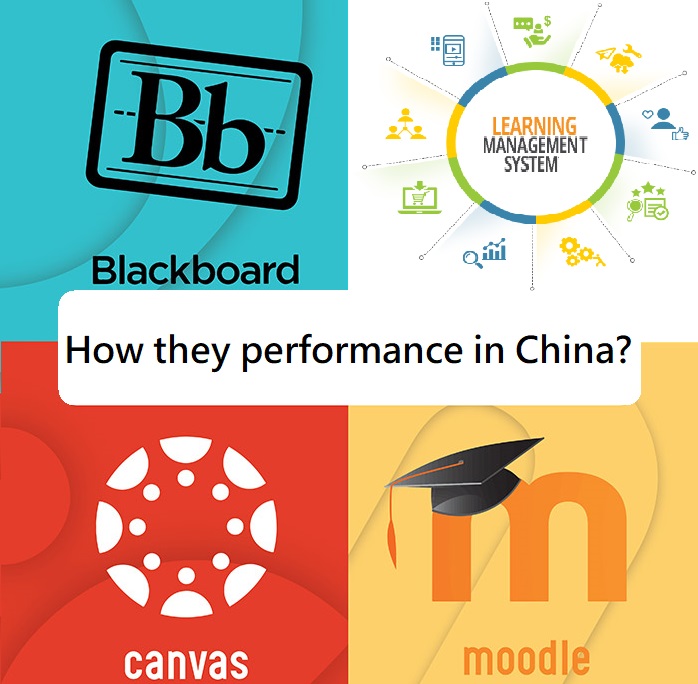Questions like why my LMS is slow in China are common in forums. Although at first glance it seems like a simple problem, the reality is that LMS faces challenges similar to those of live streaming or eLearning platforms in China. This article will address this critical issue from two perspectives: technical challenges and localization considerations.
What is an LMS?
You can think of Learning Management Systems (LMS) as applications that facilitate the creation, administration, design, and delivery of online courses that can be consumed through websites or mobile apps. It is important to emphasize that this type of software is designed to cover all aspects related to online learning, such as:
- Tracking course progress and student progress
- Management of internal documentation (for educators)
- Reporting system, including student scores
- Administration of training programs
- Course automation
- Management of media library used in courses, training, and documentation (text, videos, audio, etc)
- Design of online courses, training programs, and other learning material
If the above sounds familiar to you, it is because the idea of a learning management system was born from eLearning platforms, something that we will discuss in more detail below.
LMS vs. eLearning platforms
There are good reasons why many people confuse LMS with eLearning platforms. Both allow users and educators to organize and create educational content that can be consumed online. However, there are key technical differences between them that you should know:
- Features. LMSs often offer a much higher range of functionality than eLearning platforms, including advanced features like messaging, file sharing, integration with ERP and CMS systems, and more.
- Infrastructure. Most eLearning platforms are hosted and use the SaaS business model. For its part, most LMSs can be deployed on-premise or used under the SaaS model.
- Complexity. The enormous flexibility and scalability of LMSs often come at the price of increased complexity. Since earning platforms have more limited functionality and are hosted, they tend to be less complex.
- Price. As expected, the impressive feature-set of LMSs and their ability to integrate with almost any other system makes them more expensive than their eLearning counterparts.
Now that you have a better idea of what LMS is and what differentiates them from eLearning platforms let's talk about the most popular LMS solutions in China.
- Canvas LMS. Canvas LMS is a 100% cloud-native LMS that ranks among the top in North America. Its biggest advantage in other regions, being cloud-native, is precisely its biggest disadvantage in China, where blocking mechanisms may render it unusable.
- Moodle. Unlike Canvas, Moodle is a popular open-source LMS solution available both on-premise and hosted. Despite its great flexibility, it does not offer good localization for China, and its compatibility with some browsers is often unstable.
- Blackboard Learning. While Blackboard is a powerful LMS, like Canvas, it suffers from the problem of being cloud-native. That makes its behavior unpredictable within mainland China.
As you can see, two of the three listed LMSs are cloud-based, so they suffer from similar issues as eLearning platforms. In this sense, we recommend reading our article Why your eLearning site isn't loading in China (and how to fix it) to get a perspective of the challenges faced by these LMSs.

Why is my LMS slow in China?
The reasons that deteriorate the performance of LMS in China are varied. Next, we will review the main ones.
Time-out and connection speed issues
One of the most frequent reasons for poor LMS performance in China has to do with the stability of the connection between the student's browser and the server where the LMS is hosted. In simple terms, when you visit any web page, the browser expects to establish a stable connection with the server hosting the website. If the aforementioned client-server handshake takes longer than 30 seconds, a "time-out" error is displayed, preventing you from waiting indefinitely for the site to load.
Depending on the browser, this error can be displayed in different ways:
- ERR_CONNECTION_TIMED_OUT
- This site can’t be reached
- ERR_NETWORK_CHANGED
- ERR_CONNECTION_REFUSED
Specifically in China, this type of error is often the result of GFoC's actions which we'll delve into in a moment. For now, what you should know is that LMSs were not designed to deal with connectivity problems of this type where some of the content (videos, audio, etc) is blocked or the speed of the connection is slowed down to the point that the browse thinks the connection has been lost.
Blocked content due to GFoC
In the previous point, we mentioned the impact of the Great Firewall of China on the speed of the Internet connection. However, this is not the GFoC's only effect on LMSs and other platforms. One of the biggest obstacles facing LMSs in the Asian giant is the current blocking of audio, video, and file transmission technologies.
It should be remembered that in China, sites such as Facebook, Instagram, YouTube, and Vimeo, which are mainly used for video streaming, are blocked. Other sites useful for educators, such as Box or Dropbox, are also banned. The impact this ban has on LMSs operating from outside China is tremendous.
Today, most online courses and online training programs are heavily supported by pre-recorded video or live streaming. Many of these videos are hosted on YouTube or Vimeo for convenience, which makes them inaccessible to students in China.
VPNs’ poor performance
Unfortunately, VPNs are not a viable alternative to circumvent the problems described above. Partly because the Chinese government disapproves of the use of VPNs, and therefore students are pressured not to use them publicly. However, from a technical point of view, they do not offer a solution either, since they fail to maintain a stable connection to the LMS platform and thus incur the time-out errors described above.
The latter is something that is difficult for some people to understand since VPNs are a popular solution for accessing blocked websites. The difference with LMS is the type of content you are trying to unlock. Social networks and news sites consume relatively little bandwidth, and connection stability is not critical. LMSs, on the other hand, are greatly affected by connection slowdowns, high latency, and connection interruptions caused by blocking technologies.
Inappropriate CDNs
The points discussed so far have basically to do with external agents such as GFoC censorship. However, there is an important aspect that can also negatively impact the speed of the LMS, the CDNs. As we will explain later, a content delivery network, or content distribution network, can be a possible solution to alleviate the LMS reliability problem. However, using CDNs could be counterproductive if they are not implemented correctly.
At this point, it must be emphasized again that China is a territory where the same practices that are successful in other regions cannot be applied. This is usually a common mistake that ends up affecting the quality of the service instead of improving it.
Browser compatibility issues
As we have already mentioned, the Chinese market is complex. The popularity of local browsers has exploded in recent years, which introduces another factor that explains why LMSs are slow in China.
Most of the LMS like Moodle, Blackboard, and Canvas are tested in browsers like Firefox or Chrome but not in native browsers like Baidu. Although the market share of Google Chrome desktop is approximately 40% in China, what happens to the rest of the users? What about mobile browsers, where native apps are more used?
If you are curious about the answers, we suggest you read Why cross-browser testing is critical to your business in China.
Importance of localization for LMS in China
Another notable aspect of China has to do with its language and culture. The Chinese population expects to use an LMS in their native language with a friendly user interface whose buttons, menus, and popups are not broken due to poor implementation of the web page layout. In other words, the Chinese market is extremely demanding in terms of user experience. This presents an important challenge that, in some cases, is overlooked.
If your organization wants to use the same LMS in China as it does in other Western markets, then you need to make sure that it will be up to the task of providing an unrivaled user experience in multiple languages.
This can be a problem for businesses that already have an infrastructure and extensive libraries of educational material running on other platforms. Despite this, it is crucial to assess China's potential in terms of potential students, especially after the Pandemic. For this reason, it should not be ruled out to either adapt the LMS to suit the expectations of users in China or simply implement a different solution and migrate the material to a new LMS. Although this implies a huge effort, it would be futile to think about competing in this territory with an LMS of inferior quality due to its poor localization.

How to improve Learning Management Systems in China
We have written a lot about the importance of CDNs in China. In this sense, we suggest you read the article Everything you need to know about Chinese CDNs so that you have an overview of how crucial this service is for the success of your business in China.
In simple terms, when you use the right CDNs, you can improve latency and connection stability which helps students have a smoother LMS experience. Moreover, when using CDNs, you can reliably use key LMS features like live Q&A sessions (live streaming), which could take your LMS to the next level.
You may be wondering, which is the right CDN in China? The answer is not simple. However, generally speaking, choosing the best CDN in China is closely related to choosing the best hosting for your China website. Usually, to get better results in mainland China, it is best to hire local web hosting and CDN. This would make it easier for your organization to solve many of GFoC's technical challenges. However, if you are looking for a more comprehensive solution to serve the global market, including China, you should consider a multi-CDN.
To address the rest of the challenges associated with the Chinese market, the best strategy is constant monitoring and improvement of your LMS service. To do this, you must have a long-term vision and an understanding of the challenges in this important region. In China, what works today may not work tomorrow. A hosting provider or CDN can get banned. A change in blocking policies can lead to unexpected service disruptions, even if you host your LMS in China. Likewise, a simple browser update can render your LMS inoperable for students.
For this reason, monitoring your LMS both inside and outside of China is vital. This is another fascinating topic that we have also written about extensively. In a nutshell, the best solution for your LMS to have a first-rate user experience is to use a balanced monitoring strategy that includes synthetic tests and manual tests. That way, your team will have a constant feed of actionable insights that will allow them to fix issues quickly.
If you want to go deeper into this topic, we suggest you read. How does manual testing work in China to help with website performance? As well as 6 things that manual testing can do but synthetic testing can’t in China.
Conclusion
The rising popularity of remote education makes China one of the territories with the greatest business potential. This article has explored the challenges of entering the lucrative Chinese market, both from a technical point of view and user expectations regarding localization and performance. To that end, GoClick China can help your organization define a long-term strategy that allows you to test and monitor your LMS to ensure it works as intended. For more information, check out our services.



